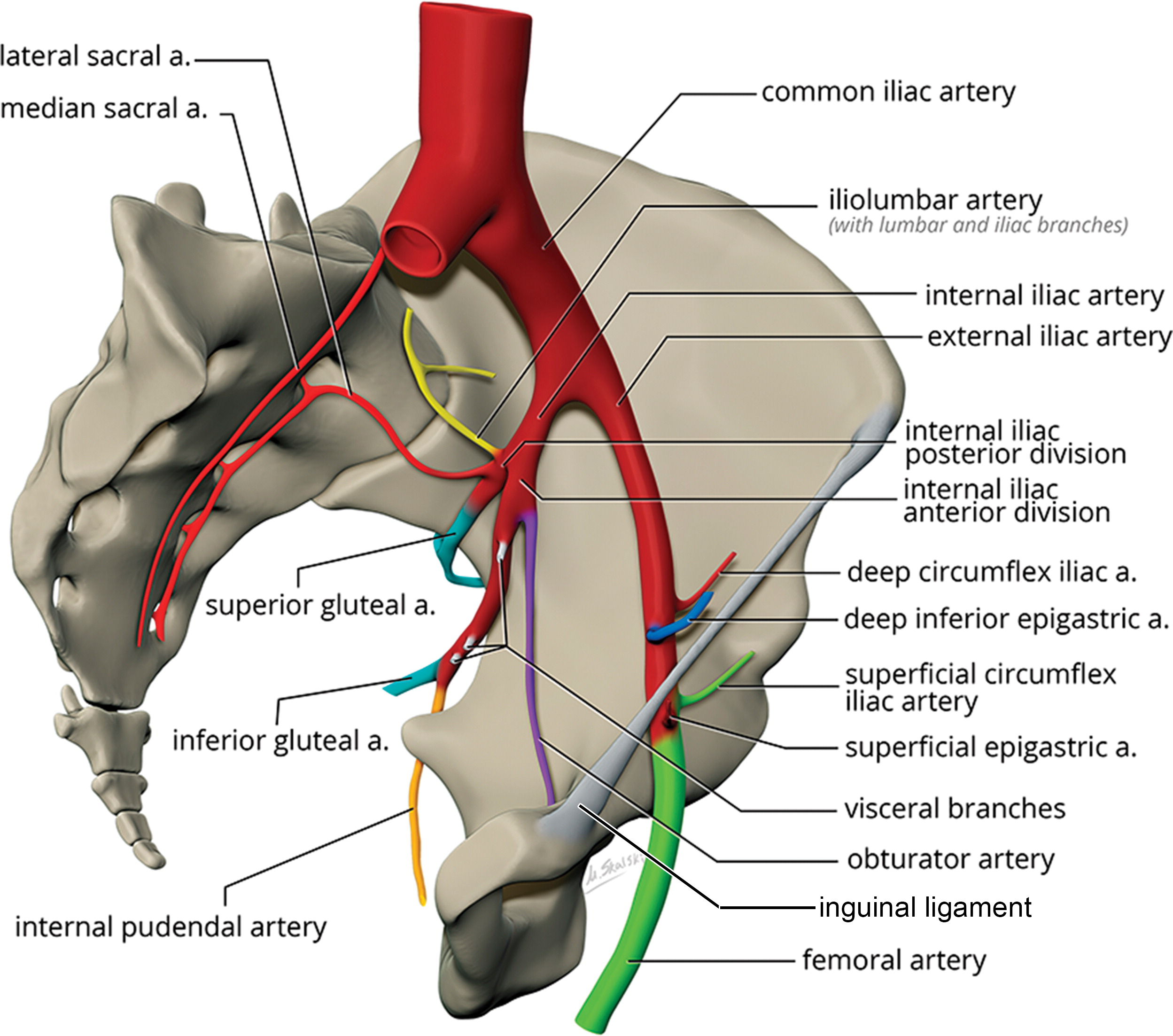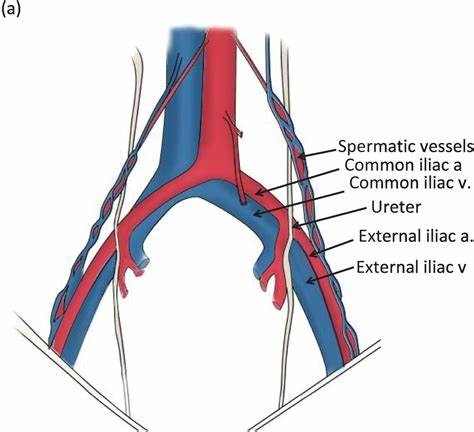Makindo Medical Notes"One small step for man, one large step for Makindo" |
|
|---|---|
| Download all this content in the Apps now Android App and Apple iPhone/Pad App | |
| MEDICAL DISCLAIMER: The contents are under continuing development and improvements and despite all efforts may contain errors of omission or fact. This is not to be used for the assessment, diagnosis, or management of patients. It should not be regarded as medical advice by healthcare workers or laypeople. It is for educational purposes only. Please adhere to your local protocols. Use the BNF for drug information. If you are unwell please seek urgent healthcare advice. If you do not accept this then please do not use the website. Makindo Ltd. |
The Iliac arteries
-
| About | Anaesthetics and Critical Care | Anatomy | Biochemistry | Cardiology | Clinical Cases | CompSci | Crib | Dermatology | Differentials | Drugs | ENT | Electrocardiogram | Embryology | Emergency Medicine | Endocrinology | Ethics | Foundation Doctors | Gastroenterology | General Information | General Practice | Genetics | Geriatric Medicine | Guidelines | Haematology | Hepatology | Immunology | Infectious Diseases | Infographic | Investigations | Lists | Microbiology | Miscellaneous | Nephrology | Neuroanatomy | Neurology | Nutrition | OSCE | Obstetrics Gynaecology | Oncology | Ophthalmology | Oral Medicine and Dentistry | Paediatrics | Palliative | Pathology | Pharmacology | Physiology | Procedures | Psychiatry | Radiology | Respiratory | Resuscitation | Rheumatology | Statistics and Research | Stroke | Surgery | Toxicology | Trauma and Orthopaedics | Twitter | Urology
Related Subjects: |The Coronary Arteries |The Axillary Artery |The Brachial Artery |The Carotid Artery |The Femoral Artery |The Popliteal artery |The Subclavian Artery |The Iliac Artery |The Brachial Artery |The Axillary Artery |The radial and Ulnar Artery
The iliac arteries are major blood vessels that supply blood to the pelvic region, gluteal area, and lower limbs. They originate from the bifurcation of the abdominal aorta and are divided into the common iliac arteries, which further branch into the internal and external iliac arteries.
Anatomy of the Iliac Arteries
- Common Iliac Arteries :
- Origin: The common iliac arteries arise from the bifurcation of the abdominal aorta at the level of the fourth lumbar vertebra (L4).
- Course: Each common iliac artery travels downward and laterally along the inner border of the psoas muscle.
- Bifurcation: Each common iliac artery bifurcates into the internal and external iliac arteries at the level of the lumbosacral junction.
- Internal Iliac Arteries :
- Course: Descends into the pelvis and gives off numerous branches that supply the pelvic organs, gluteal region, and perineum.
- Branches:
- Anterior Division : Supplies the pelvic organs and muscles.
- Posterior Division : Supplies the gluteal muscles and pelvic wall.
- External Iliac Arteries :
- Course: Travels along the pelvic brim and passes under the inguinal ligament to become the femoral artery in the thigh.
- Branches:
- Inferior Epigastric Artery : Supplies the anterior abdominal wall.
- Deep Circumflex Iliac Artery : Supplies the iliac crest and anterior abdominal wall.


Functions of the Iliac Arteries
- Blood Supply to Pelvic Organs :
- The internal iliac arteries provide blood to the pelvic organs, including the bladder, rectum, reproductive organs, and part of the intestines.
- Blood Supply to Lower Limbs :
- The external iliac arteries continue as the femoral arteries, supplying oxygenated blood to the lower limbs.
- Blood Supply to Gluteal Region :
- The branches of the internal iliac arteries supply blood to the gluteal muscles and surrounding structures.
- Blood Supply to Abdominal Wall :
- The inferior epigastric and deep circumflex iliac arteries, branches of the external iliac arteries, supply the anterior abdominal wall.
Clinical Relevance
- Aneurysms :
- Aneurysms in the iliac arteries can lead to rupture and life-threatening haemorrhage.
- Symptoms: Often asymptomatic until rupture; may include pain in the abdomen, back, or pelvis.
- Diagnosis: Ultrasound, CT angiography, or MRI.
- Treatment: Surgical repair or endovascular stenting.
- Peripheral Artery Disease (PAD) :
- A condition characterized by atherosclerosis in the iliac arteries, leading to reduced blood flow to the lower limbs.
- Symptoms: Claudication (pain in the legs during exercise), leg numbness, or weakness.
- Diagnosis: Ankle-brachial index (ABI), Doppler ultrasound, CT angiography, or MRI.
- Treatment: Lifestyle changes, medications, angioplasty, or surgical bypass.
- Endovascular Interventions :
- Procedures such as angioplasty and stenting can be performed to treat stenosis or occlusions in the iliac arteries.
- Used to improve blood flow and relieve symptoms associated with PAD or other vascular conditions.
- Pelvic Trauma :
- Injuries to the iliac arteries can occur due to pelvic fractures or penetrating trauma.
- Symptoms: Haemorrhage, hypotension, and signs of shock.
- Treatment: Emergency surgical intervention to control bleeding and repair the damaged vessels.
Summary
The iliac arteries are crucial for supplying blood to the pelvic region, gluteal area, and lower limbs. The common iliac arteries bifurcate into the internal and external iliac arteries, each serving distinct regions and functions. Understanding their anatomy and clinical significance is essential for diagnosing and managing vascular conditions such as aneurysms, peripheral artery disease, and trauma-related injuries.